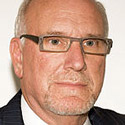01:42 PM
The Technology Economics of the Mainframe: Mainframe Computing Still Growing in Banking
Contrary to conventional wisdom, mainframe computing is growing. In fact, financial services has been passed by only a few sectors in terms of growth in mainframe MIPS, or million instructions per second. But maybe this is good news: Multiyear results show that "mainframe-heavy" organizations are more economically efficient in supporting business computational demands and have more upward scalability than distributed-server-heavy organizations.
Decisions about computer platform choices and options typically are made without consideration of true business impact from a cost-of-goods or other perspective. As a consequence of what we know about technology economics today, however, platform choices can be based on factual criteria and should not be decided as a "fashion statement."
During the 50-year history of what we now call "technology economics," it has always been clear that demand for computing is increasing and that upward expense pressure is a fact of life in what many have called the Information Age. Between 2006 and 2010, demand for processing cycles (MIPS, servers and the like) slowly approached an 18% annual growth rate in the big banks, while storage demand has been growing at 45% or more per year.
[What's Hot In Wall Street Institutional Apps? ]
With infrastructure spending -- on computing power, networks, storage, help desks and so on -- historically accounting for 57% of overall IT expense, it is likely that it is the largest component of an organization's "IT Cost of Goods." As such, it is worthy of investigation and analysis.
Previous research that exlpored the dynamics of platform economics indicated that firms with a mainframe computing platform bias ("mainframe heavy") exhibited a lower IT Cost of Goods and overall IT costs in situations in which the mainframe was a suitable platform. Conversely, "server heavy" firms were at an economic disadvantage -- higher IT Cost of Goods and overall infrastructure costs. Additional research updates these earlier findings, continuing to chart the interaction (and value) of computing choices and real bottom-line business impacts.
Key cost of goods metrics were identified for the sectors under study. Within each sector, analyses were performed to determine average levels of both mainframe and distributed server usage relative to business volumes/revenue. Within each sector, two groups were identified -- "mainframe heavy" and "distributed-server heavy," relative to average levels of usage.
Within these two groups (by industry), IT Cost of Goods was computed and compared.

The research database for this study contained data from 498 companies across 20 sectors, spanning the years 2008 to 2011. Data elements include the amount of computational resources along with key business performance parameters.
Across the 498 companies studied, on average, computational needs grew far faster than revenue. MIPS capacity grew at 2.33 times the rate of revenue growth, while distributed server deployments grew at 3.5 times the rate of revenue growth. Additionally, firms that had higher mainframe growth had 25% lower distributed server growth and exhibited approximately
67 percent more-effective cost containment than those with less mainframe intensity. The implication is that the required computational growth is roughly three times more economically efficient in a mainframe environment.
Further, organizations with high mainframe intensity had 39% more upward scalability in that they could support revenue growth with 61% less investment than those that were distributed-server-intense. And organizations with high mainframe intensity maintained their leverage in terms of lower IT Cost of Goods. Across sectors, the gap widened by 3%; in banking, the gap widened by 2%, with mainframe platforms maintaining an astounding 67% cost advantage at the unit cost-per-core transaction level.
This research reveals a pattern that indicates that mainframe-heavy organizations are more economically efficient in supporting the computational demands of increased revenue than distributed-server-heavy organizations. Such patterns are critical to observe and understand as computational demand increases in the global economy, in business and government, and in our daily lives.
It is likely that 2012 is the "technology economic tipping point" -- the point at which demand for computing growth outstrips the ability of Moore's Law to offset increased costs. This perhaps is also the point at which organizations that have not learned by codifying the patterns of technology costs and value will see their tech expenses spiral out of control, leading to uninformed demands to cut IT expenses. On the flip side, those oganizations that have an understanding of technology economics will find themselves in a position of extreme competitive advantage.
Howard A. Rubin is founder of Rubin Worldwide, a research and advisory firm focused on the economics of business technology. [email protected] Dr. Howard A. Rubin is a Professor Emeritus of Computer Science at Hunter College of the City University of New York, a MIT CISR Research Affiliate, a Gartner Senior Advisor, and a former Nolan Norton Research Fellow. He is the founder and CEO of Rubin Worldwide. Dr. Rubin is ... View Full Bio



















